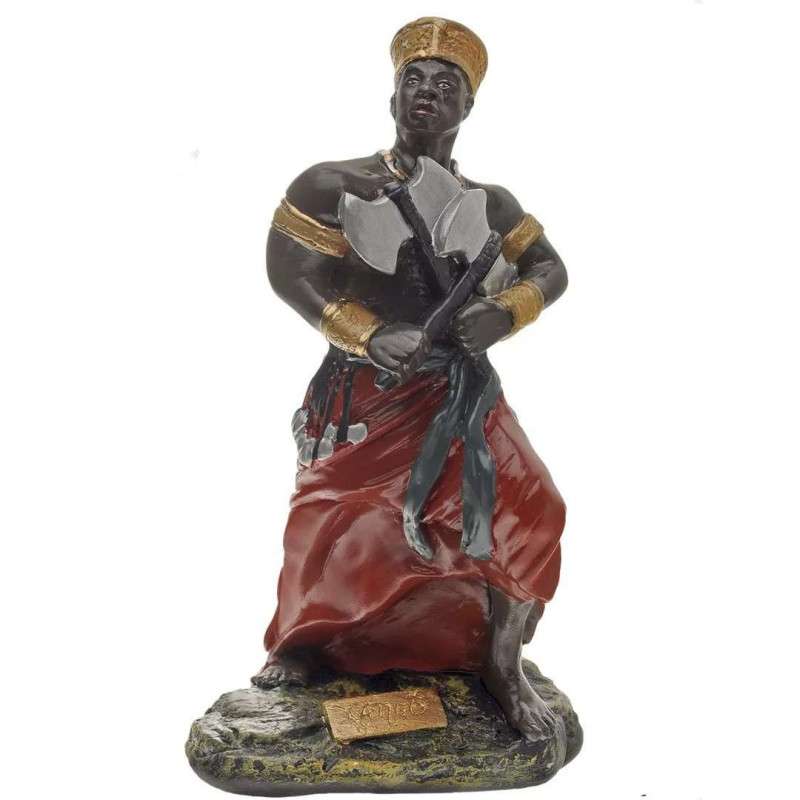



Image of Xango
Material: Hand-painted plaster.
Size: Approximately 10 cm tall.

Security policy

Delivery policy
According to legend, Xangô was the king of Òyó - a region that is now Nigeria - and had an authoritarian and violent character, in addition to being extremely virile, daring, vain and vigilante. Known for practicing hard, fair and blind justice, like a rock - which is another element that represents him: the rock.
Umbanda and Candomblé, religions of Afro-Brazilian origin, have celebrations and cults in honor of Xangô. The "Axe of Xangô" or Oxé, is the main symbol of Xangô.
The weapon is a double-bladed ax that, when their "sons" (people who, within Umbanda and Candomblé cults, embody the spirit of Xangô) are in a trance, they carry with their hands.
The orixás are ancestors deified by Candomblé, a religion brought to Brazil from Africa during the 16th century by the Yoruba people.
Among the various orixás, in addition to Xangô, is Ogun, owner of iron and fire, defender of law and order, who opens paths and wins fights, protecting the weakest.
There is Exu, lord of the beginning and transformation, the guardian of villages and cities, who, due to religious intolerance, was associated by some Christians with Satan, an evil being.
However, this association is not consistent with religions of African origin, in which there are no figures solely representing evil.
In Brazil, each orixá was associated with a saint of the Catholic Church, in a practice that became known as religious syncretism. Xangô is syncretized with Saint Jerome, Saint John the Baptist and Saint Peter. His color is brown and the day is Wednesday.
History of Xango
Xangô was the son of Torossi (also called Iamassé) and Oraniã, brother of Dadá Ajacá, and married to three other deities: Iansã, Oxum and Obá. He was king of Òyó and many legends about the deity are present in African mythology.
One of them tells that Xangô is extremely fair, but also violent, and would have won a battle against Ogun to win the heart of Iansã, who would later become his wife. Xangô fought against Ogun using a stone capable of releasing flames, called a lightning stone.
Another legend says that Xangô punishes those who behave badly with his rays. Therefore, having the house hit or being struck by lightning would be a kind of punishment from Xangô, which requires a change of conduct.